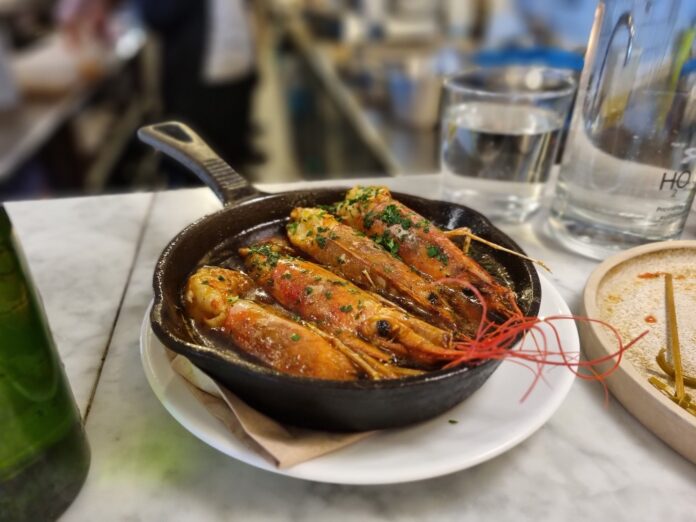From the familiar comfort of your morning brew to obscure preparations steeped in centuries of tradition, coffee speaks a universal language through wildly different dialects. In crowded Turkish coffee houses, fortune-tellers still interpret patterns in grounds, while in Hanoi’s humid streets, coffee drips slowly through single-serving filters onto beds of sweetened condensed milk, encouraging the city’s frenetic, kinetic energy to pause.
Italian baristas perfect the art of the 30-second espresso, as Ethiopian families maintain age-old ceremonies of roasting fresh beans by hand. These 10 remarkable preparations reveal coffee’s extraordinary range – from simple pleasures to complex rituals, each with its own story to tell and secrets to master.
Note: We’ve included general tasting profiles for each coffee which profile represent the characteristics of a properly prepared traditional serving, though individual preparations may vary based on specific beans, roasts, and regional preferences.
Ethiopian Buna
Ideal for sensory journeys through coffee’s birthplace…
In its birthplace, coffee remains a social ceremony. The traditional preparation involves roasting green beans fresh before brewing, creating an experience that engages all senses. This ceremony can last for hours, with multiple rounds of brewing and conversation, embodying the Ethiopian principle of coffee as a means of connection rather than mere refreshment.
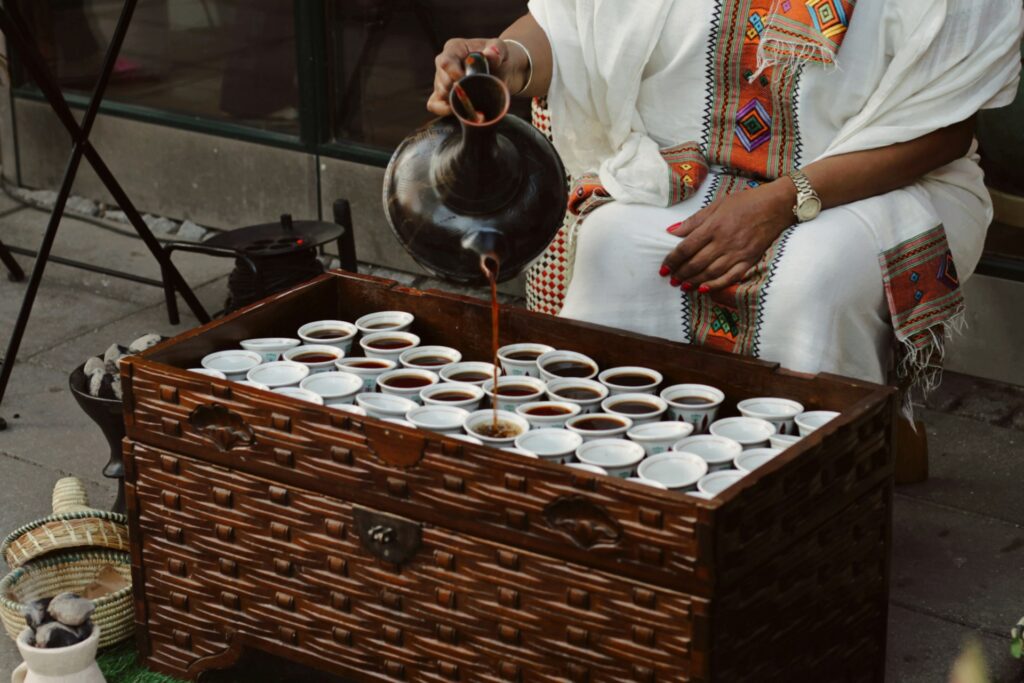
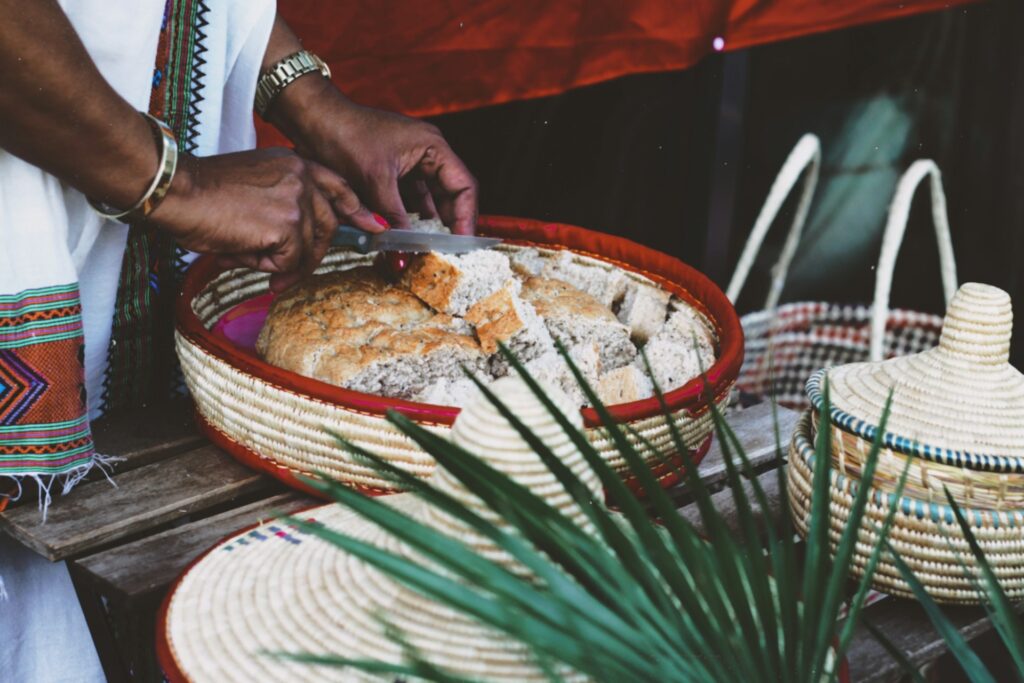
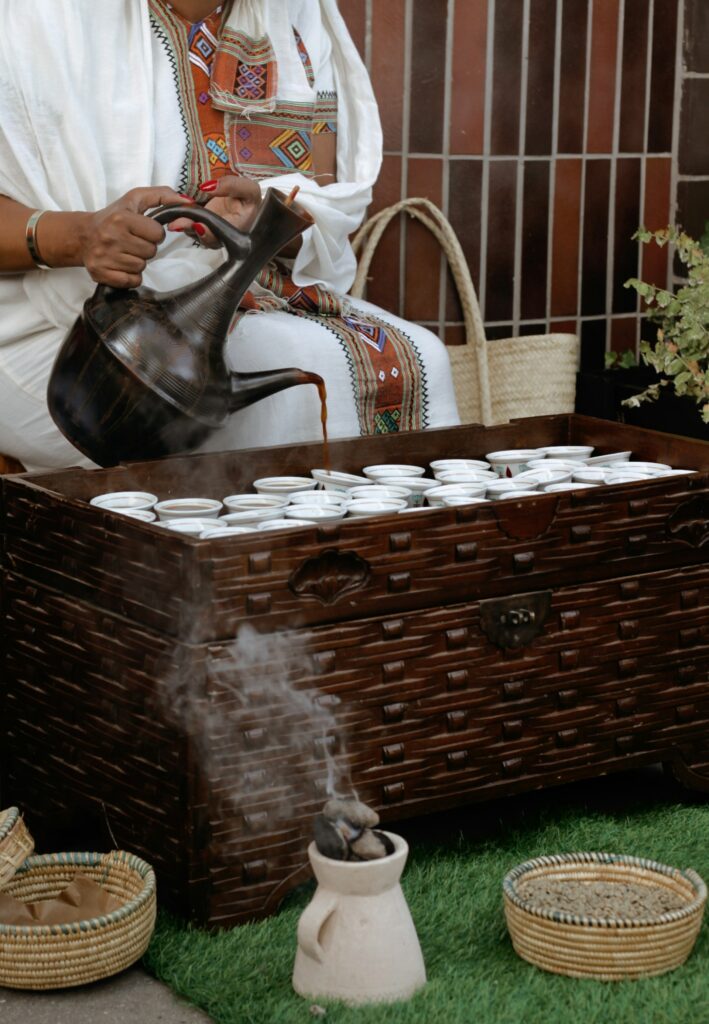
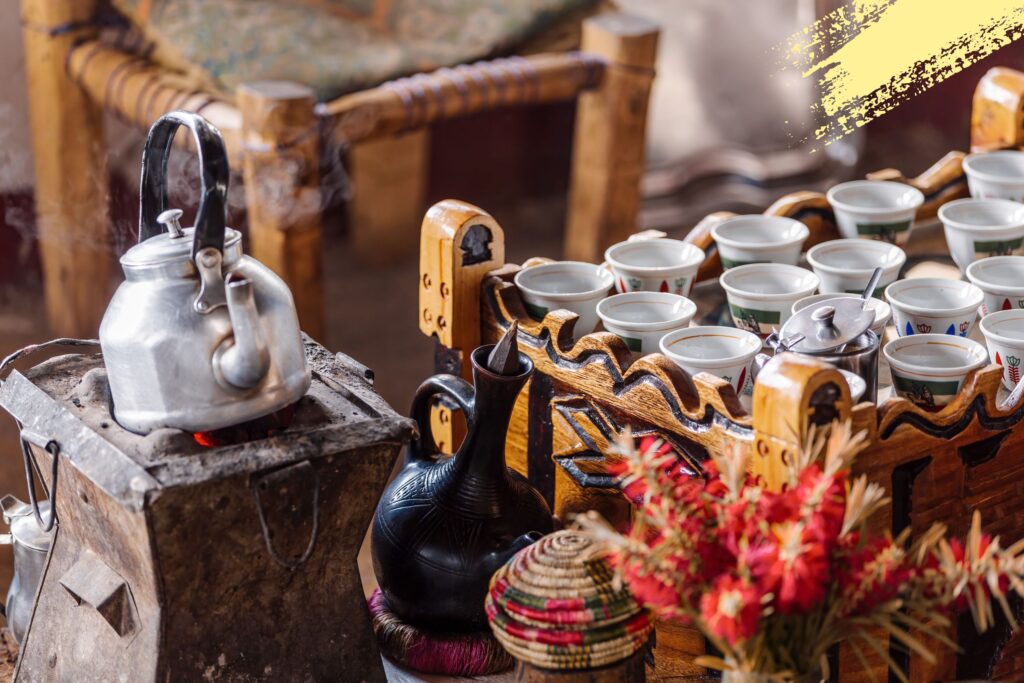
How to brew: Roast green beans in a pan until medium-dark. Grind coarsely and add to a jebena (clay pot) with water. Bring to a boil three times, strain, and serve in small cups called cini.
Best coffee: Ethiopian Yirgacheffe or Sidamo green beans, freshly roasted and coarsely ground. These regions produce beans with distinctive floral and citrus notes that shine in this traditional preparation.
Popular brands: Tomoca and Yirgacheffe Farmers Cooperative Union (YFCU). Tomoca, Ethiopia’s oldest coffee roaster, is cherished for its authentic dark-roasted beans perfect for traditional ceremonies. YFCU, a collective of local farmers, produces premium single-origin beans that capture the region’s distinctive floral notes.
Full, general tasting profile: Begins with profound blueberry and jasmine aromas from the fresh roasting process. First sip reveals wild honey sweetness, followed by bergamot and dark chocolate undertones. Final notes dance between blackcurrant and subtle wine-like fermented fruits. The successive brews (traditionally three) evolve from bright and intense to deeper, more contemplative flavours.
Japanese Pour-Over
Ideal for crystal-clear flavours and clean finishes…
The Japanese have elevated the simple pour-over into an exercise in mindfulness and precision, producing a remarkably clean cup that highlights subtle flavour notes. This method emphasises the importance of technique, timing, and attention to detail, resulting in a brew that captures the most delicate characteristics of the beans.
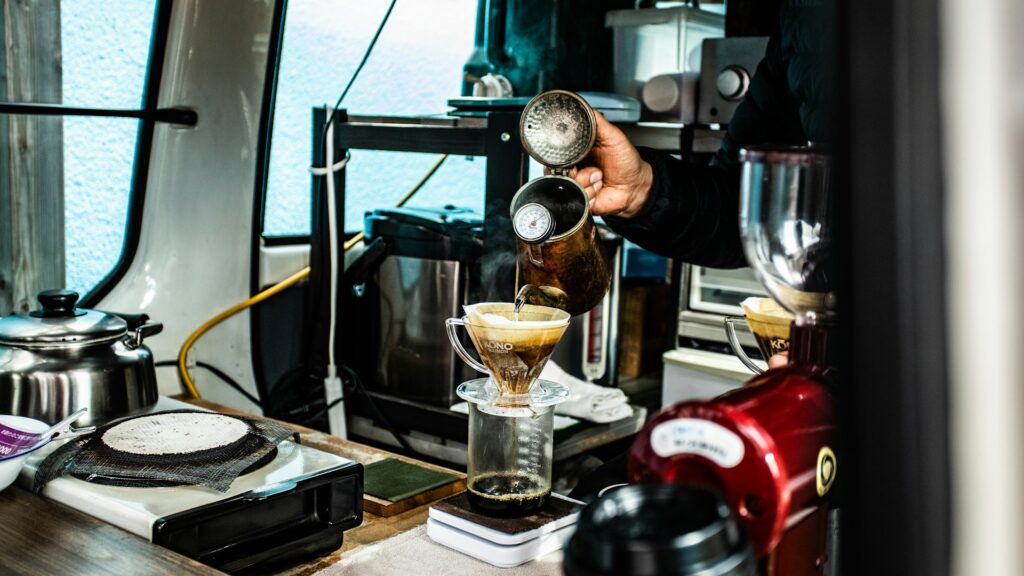
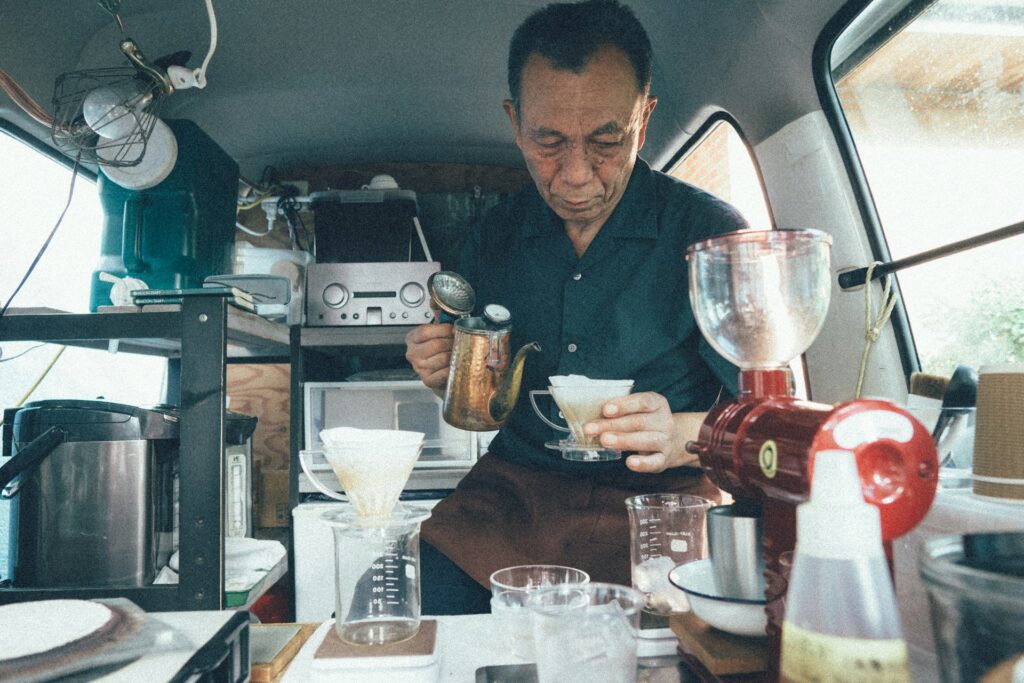
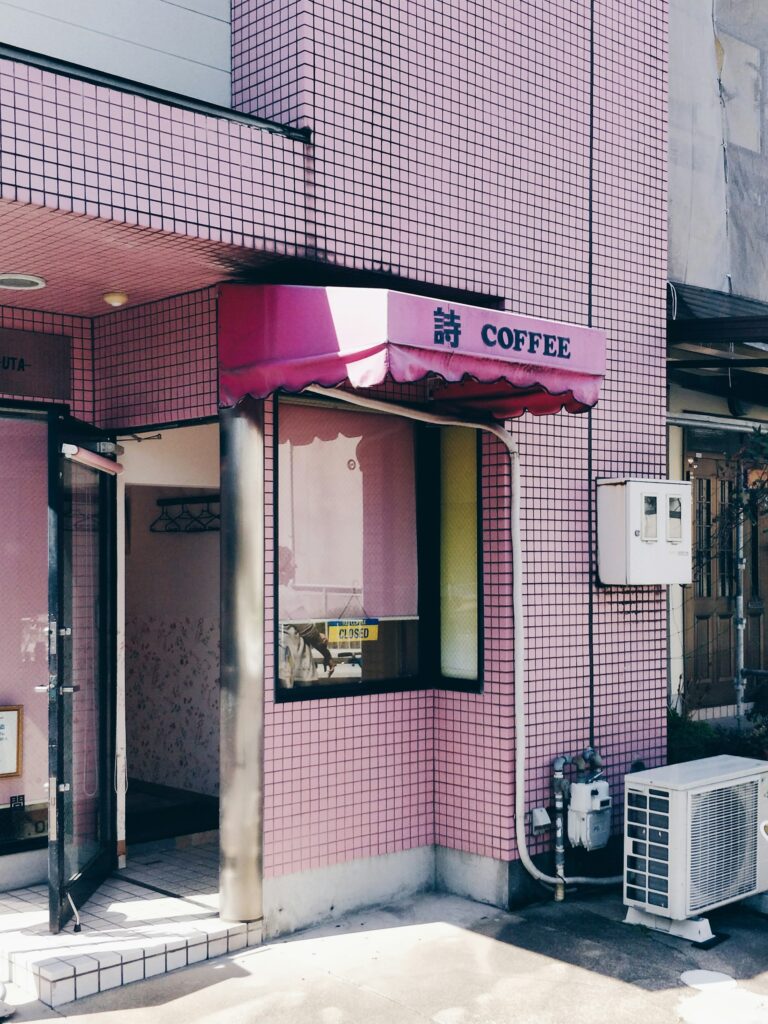
How to brew: Using a V60 dripper, pour hot water (92°C) in concentric circles over 22g of medium-fine ground coffee. Total brew time: 2:30-3:00 minutes for 350ml water.
Best coffee: Light to medium roast single-origin beans, medium-fine grind. Central American or Ethiopian beans with bright, complex flavour profiles work exceptionally well with this precise extraction method. It’s often enjoyed over ice.
Popular brands: % Arabica and Hario. % Arabica, founded in Kyoto, is renowned for its meticulously sourced single-origin beans specifically roasted for pour-over preparation. Hario, whilst known for equipment, also produces specially curated coffee beans that complement their iconic V60 dripper.
Full, general tasting profile: : Opens with pristine clarity – think freshly sliced green apple and white peach. The mid-palate presents delicate jasmine tea characteristics with hints of toasted rice. Clean mineral finish with lingering notes of brown sugar and mandarin. When served over ice, develops additional layers of honeydew melon and cucumber freshness.
Greek Frappé
Ideal for long, cooling refreshment with serious caffeine…
A happy accident born in the 1957 Thessaloniki International Fair has become Greece’s national summer drink—a foam-topped iced coffee that’s refreshingly different from modern frappuccinos. This simple yet satisfying drink has become synonymous with leisurely Mediterranean afternoons and casual café culture. Check out, too, the viral Freddo Cappucino, and offshoot of the Greek Frappé.

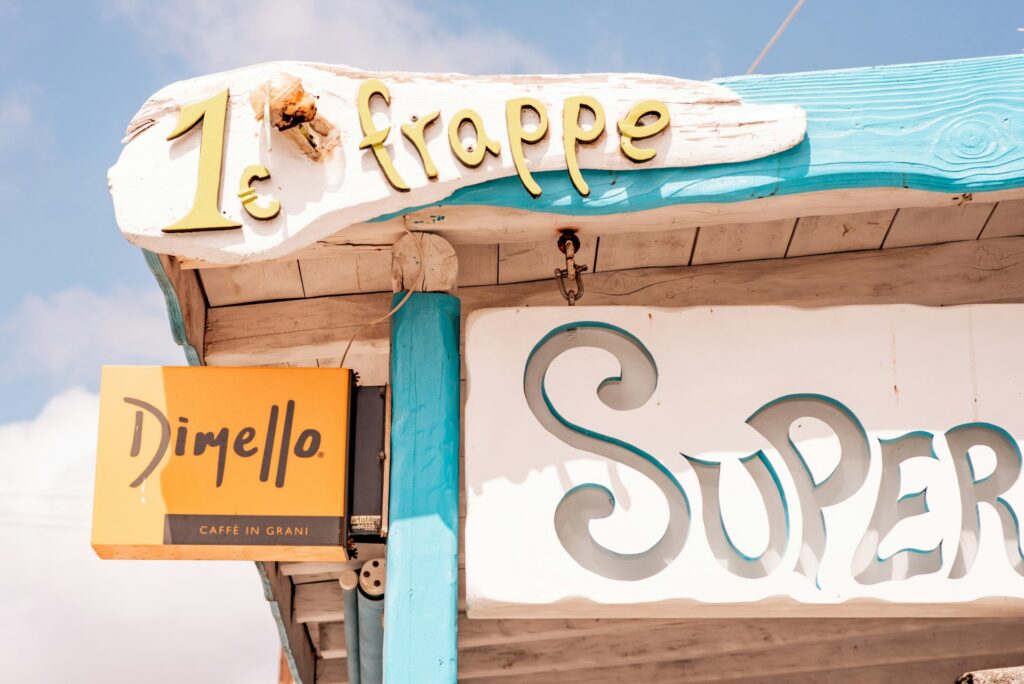
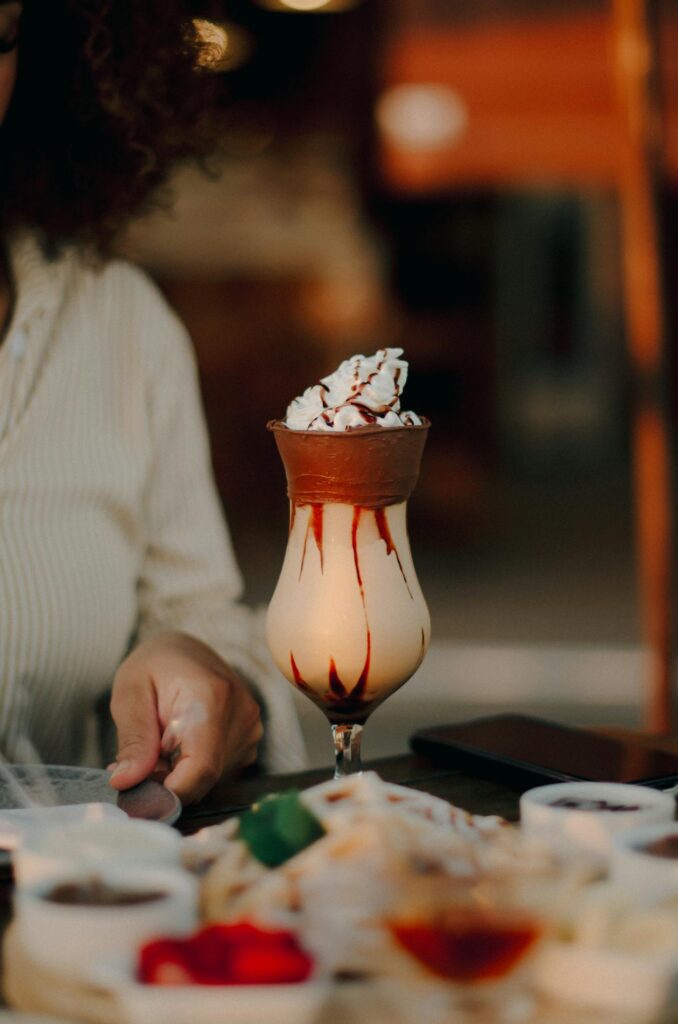
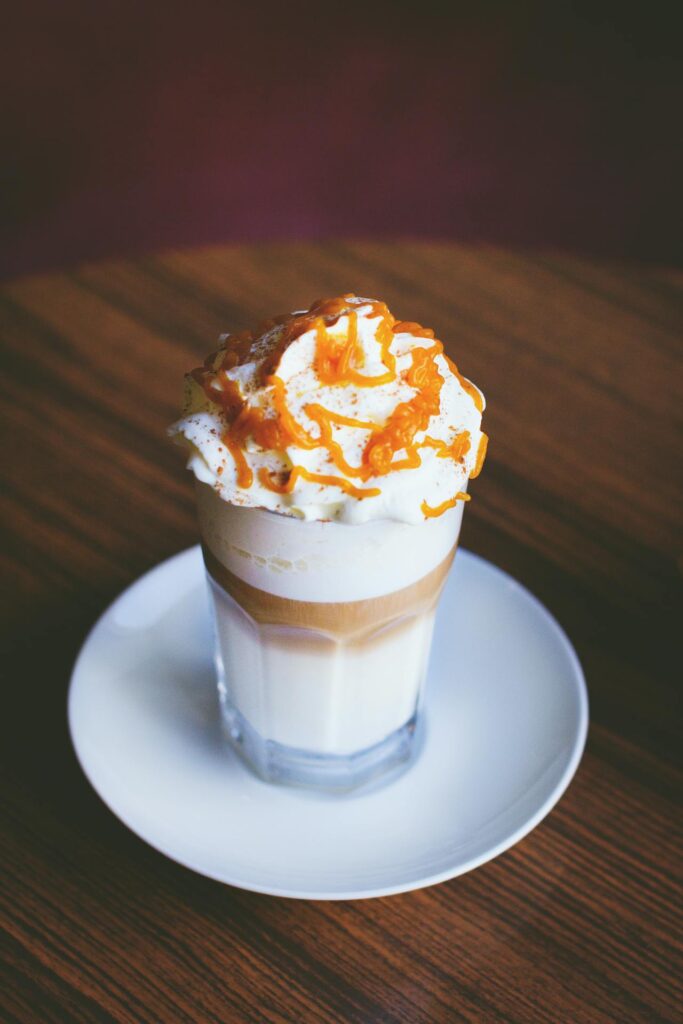
How to brew: Blend 2 teaspoons of instant coffee, sugar, and a splash of cold water until incredibly frothy. Pour into a tall glass with ice and cold water, add milk if desired.
Best coffee: Classic spray-dried instant coffee works best—tradition calls for Nescafé Classic, though any quality instant coffee will do. The key is using a coffee that produces rich, stable foam.
Popular brands: Loumidis and Bravo. Loumidis produces the iconic Papagalos brand, considered the authentic choice for Greek frappé. Bravo, another household name, offers a classic instant coffee blend that creates the characteristic thick foam essential for a proper frappé.
Full, general tasting profile: The dense foam offers a creamy, almost marshmallow-like introduction. Body presents robust malty notes with hints of toasted cereals. When properly shaken, develops a distinctive toffee-like sweetness balanced by pleasant bitter cocoa notes. The finish is refreshingly clean with subtle caramel undertones.
Turkish Coffee
Ideal for rich, unfiltered intensity with grounds that tell fortunes…
This centuries-old brewing method produces an intensely flavoured, unfiltered coffee that’s more of a ritual than a mere drink. Dating back to the Ottoman Empire, Turkish coffee represents one of the oldest preparation methods still widely enjoyed today. The resulting cup is rich, full-bodied, and often served alongside Turkish delight or other sweet treats. The grounds left in the cup are traditionally used for fortune telling, adding an element of mysticism to the experience.
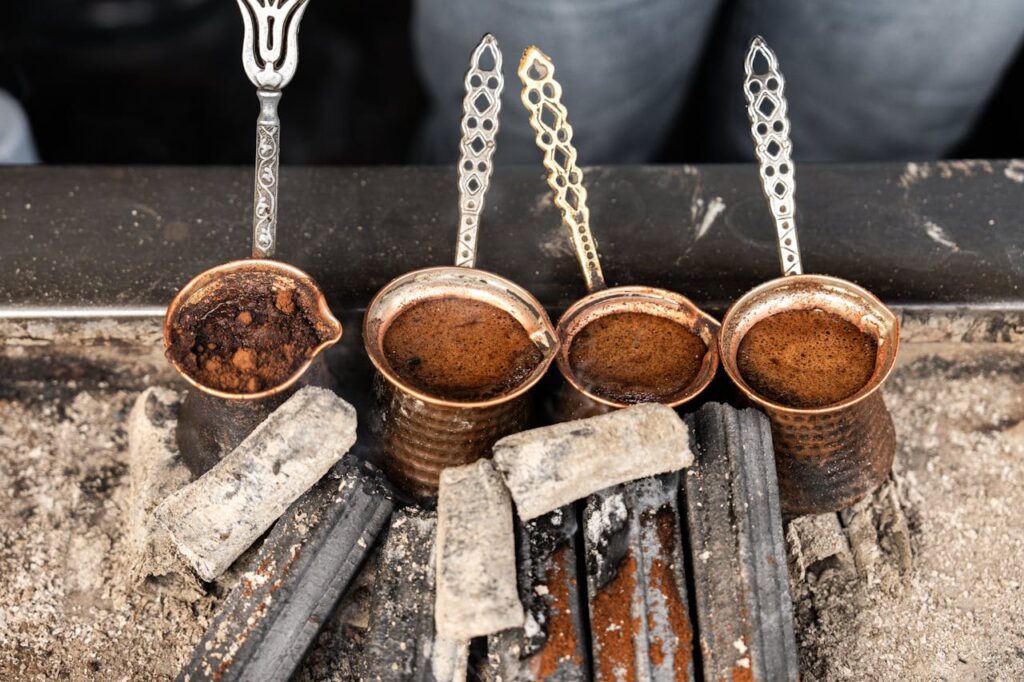
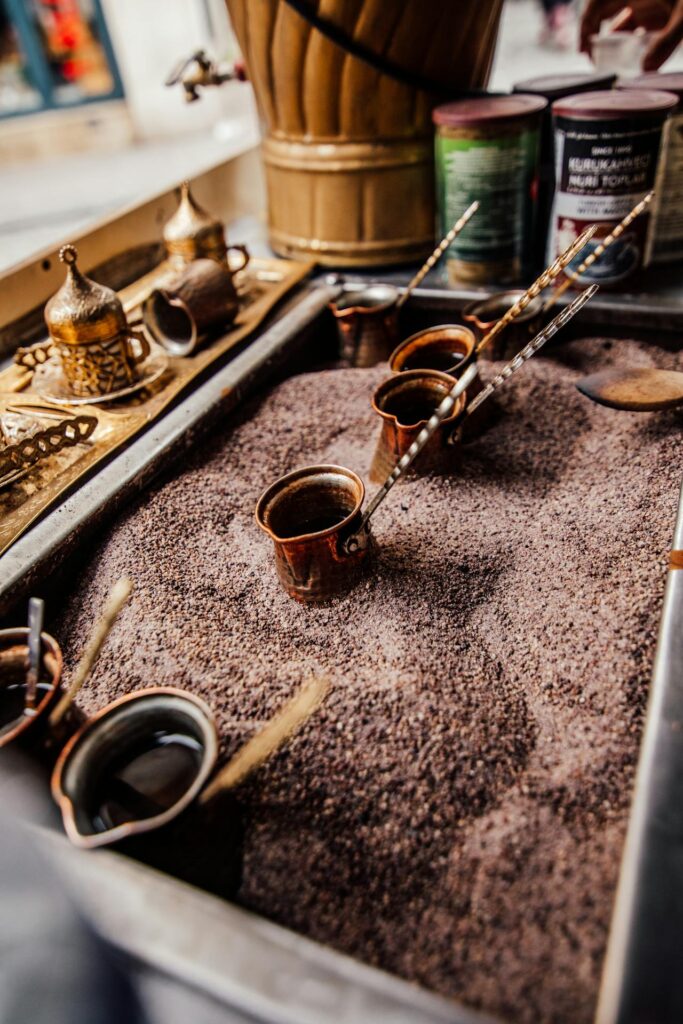
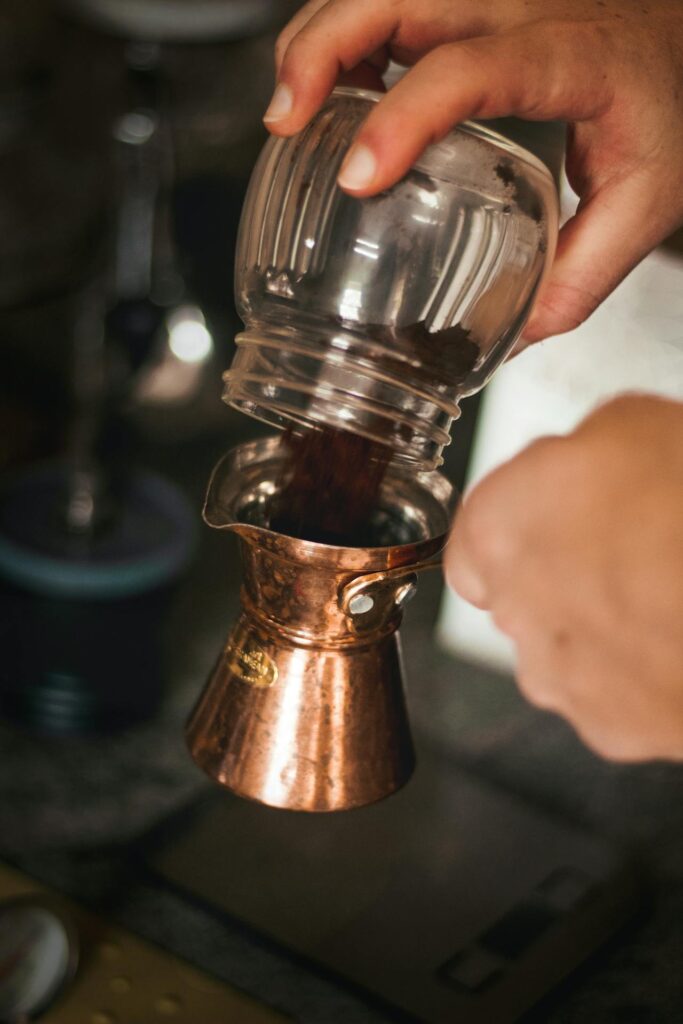
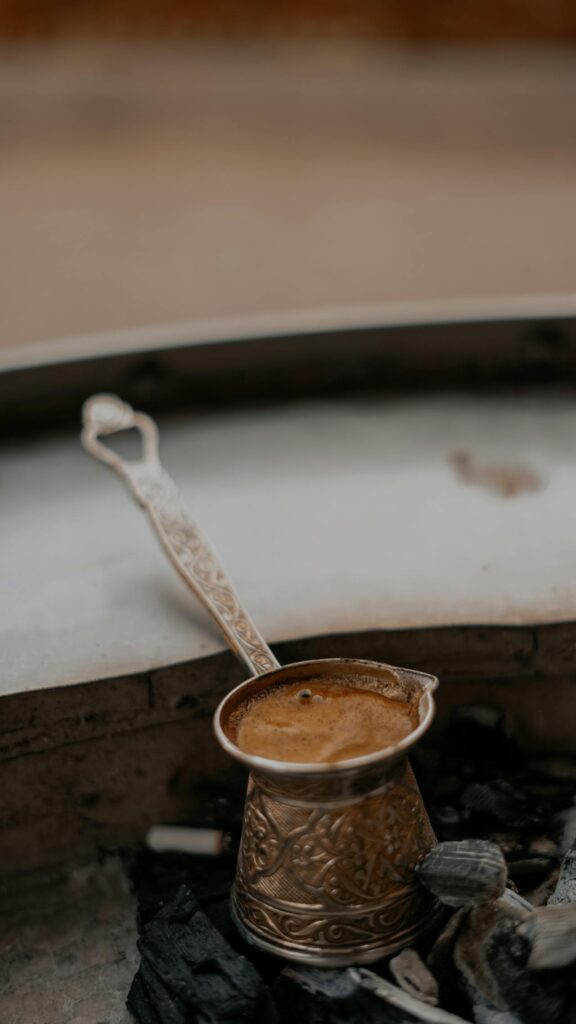
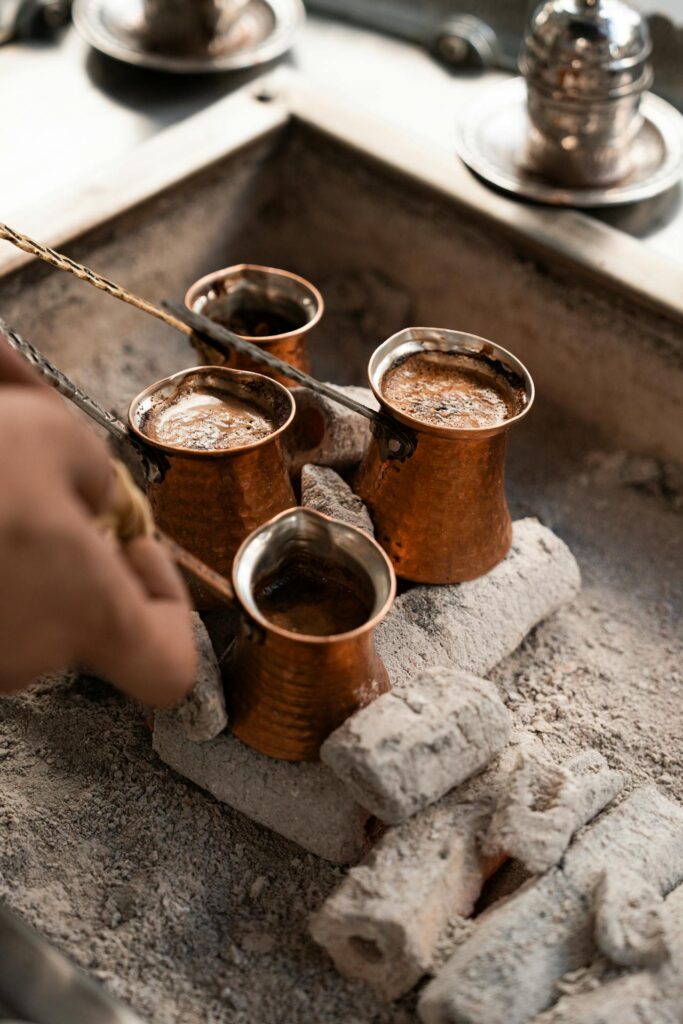
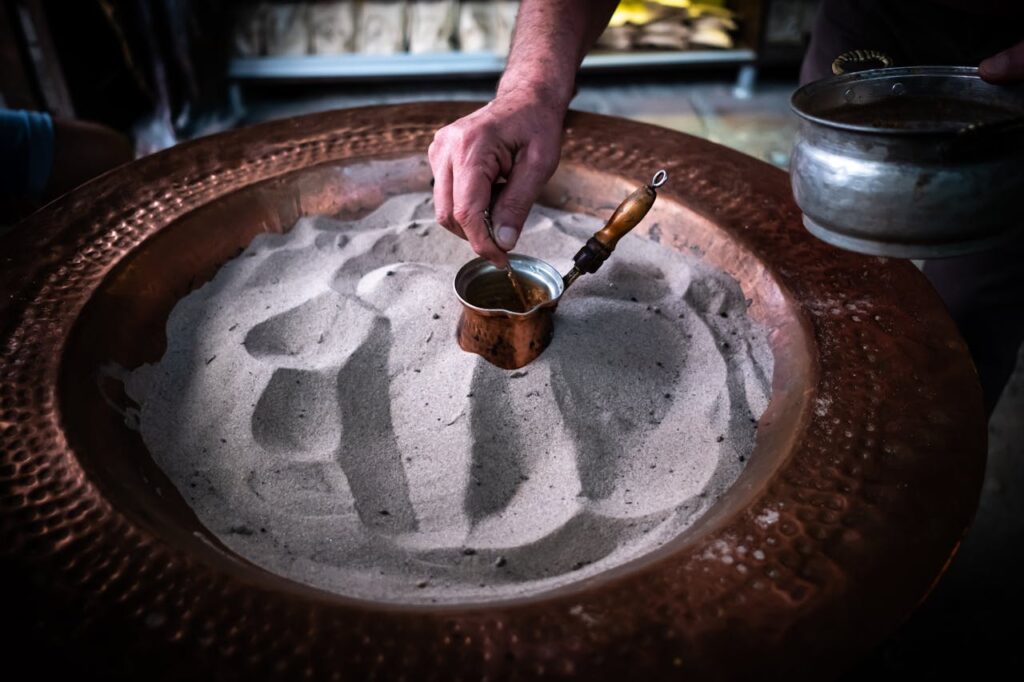
How to brew: Add one heaped teaspoon of extra-fine coffee and sugar (if desired) per demitasse cup of cold water to your ibrik. Heat slowly, removing from heat just as the foam rises. Repeat this process three times before serving.
Best coffee: Dark to medium-dark roast beans ground to powder-like consistency. Brazilian Santos or Ethiopian Yirgacheffe beans work particularly well, offering chocolate and spice notes that complement the brewing method.
Popular brands: Kurukahveci Mehmet Efendi and Selamlique. Kurukahveci Mehmet Efendi, established in 1871, remains the most trusted name in Turkish coffee, known for their perfectly ground beans. Selamlique offers premium traditional blends with varying degrees of roast specifically for Turkish preparation.
Full, general tasting profile: Intense aromatics of fresh leather and dark cocoa lead into a remarkably full-bodied experience. The unfiltered brew presents deep molasses sweetness balanced by warm baking spices. Distinctive notes of black cardamom and roasted hazelnuts emerge mid-palate. Finishes with a lingering complexity of dark forest fruits and bitter chocolate.
Vietnamese Cà Phê Nâu Đá
Ideal for sweet, silky hits in subtropical climes…
A bold marriage of dark-roasted Robusta coffee and sweetened condensed milk, this Vietnamese staple offers a perfect balance of intensity and indulgence. Known as Sữa Đá in the South and Nâu Đá in the North, this refreshing, sweet-as-you-like drop was born during the French colonial period when fresh milk was scarce, this preparation method has evolved into a beloved daily ritual in Vietnam’s humid climate.
The slow drip through the phin filter creates anticipation, while the final product offers a luxurious mouthfeel and deep coffee flavour that cuts through the sweetness.
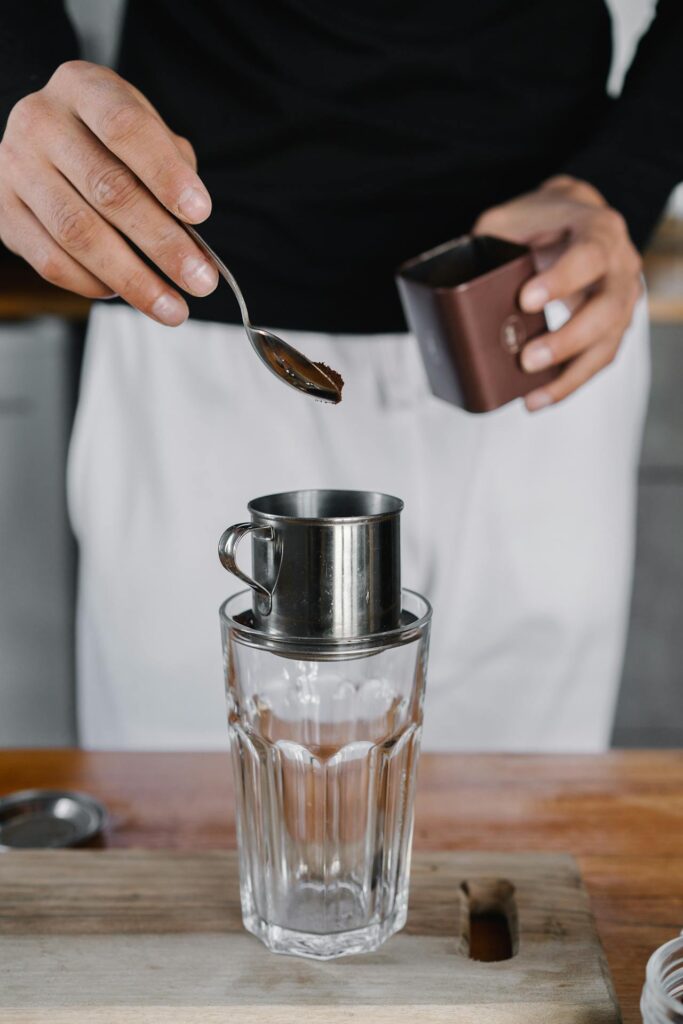
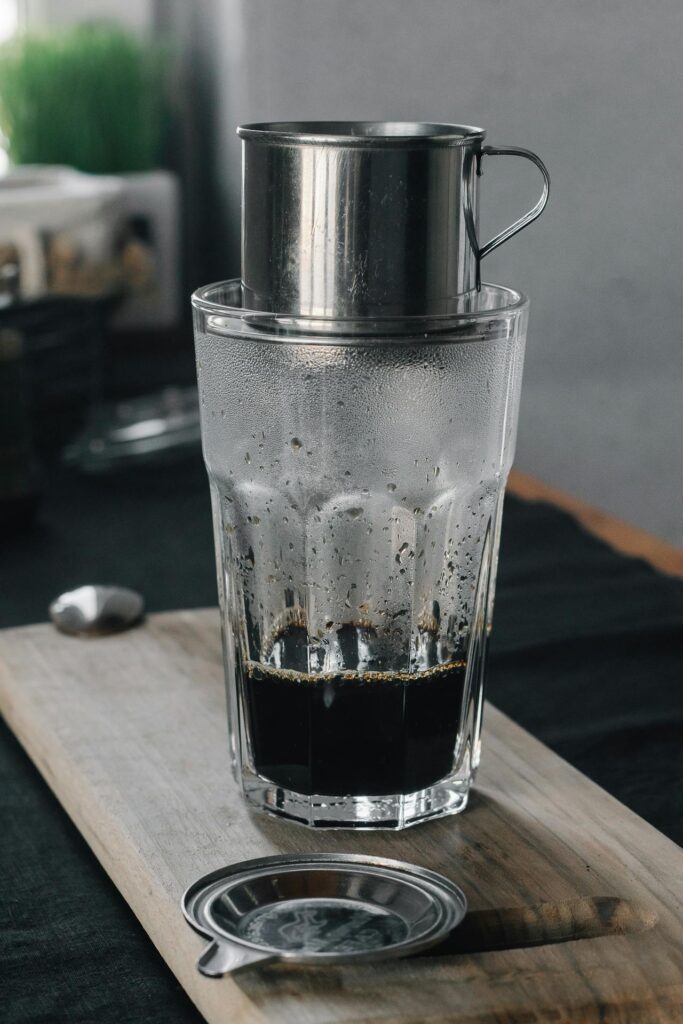
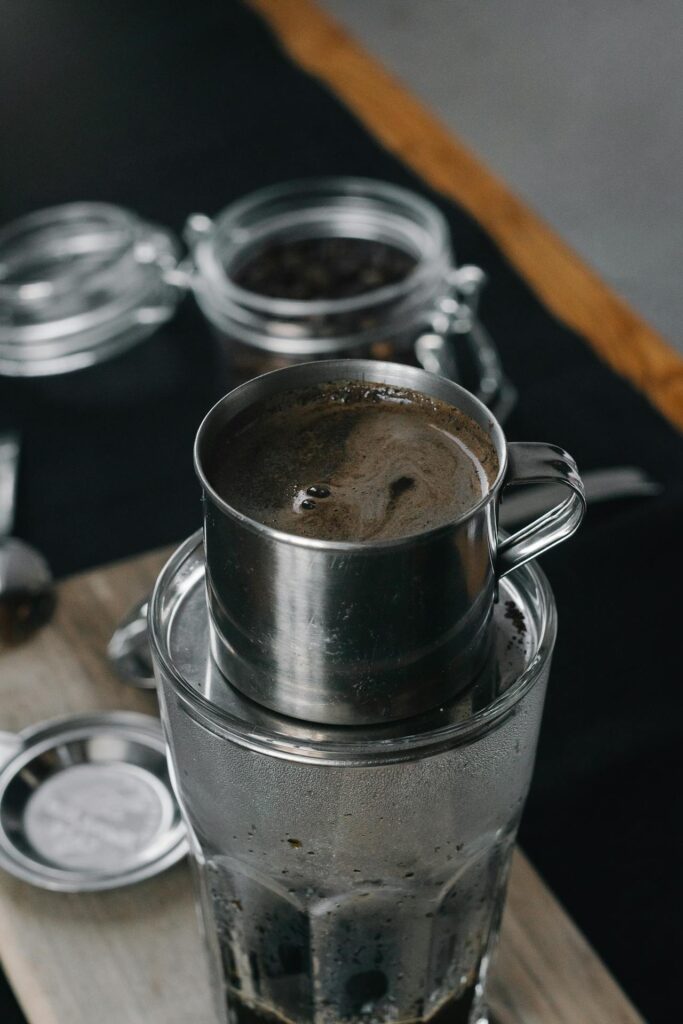
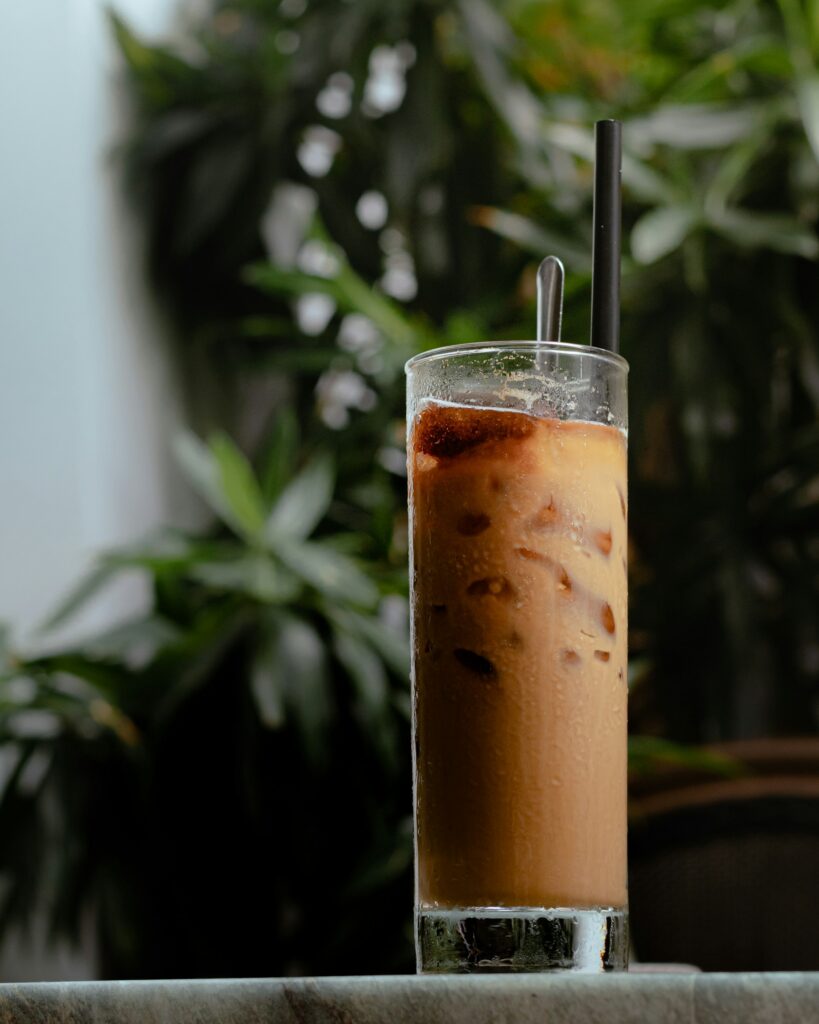
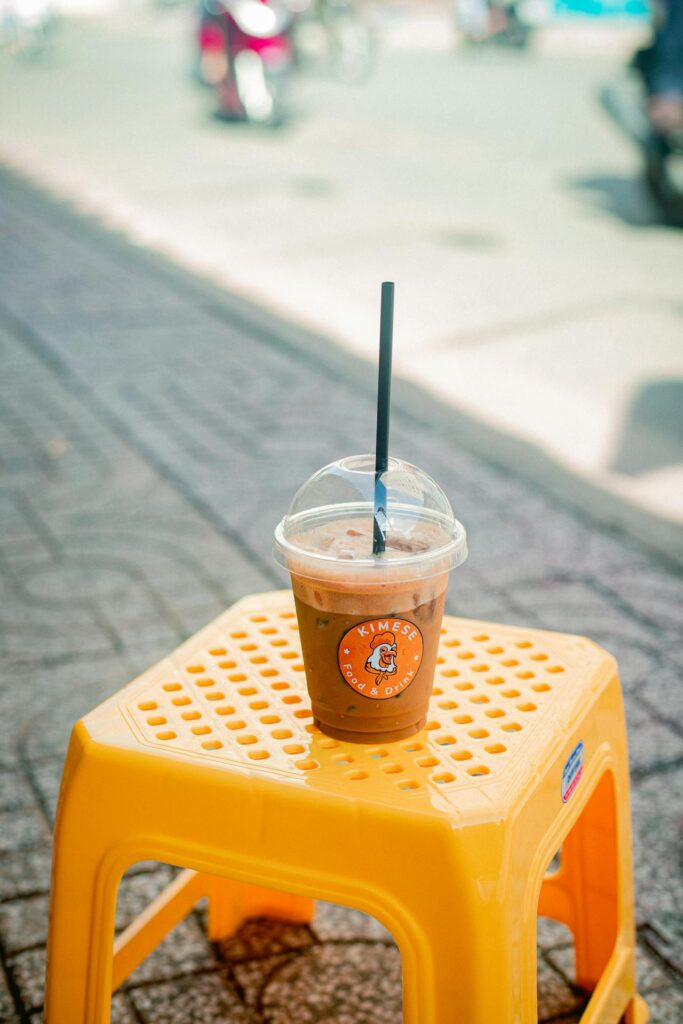
How to brew: Place 2-3 tablespoons of ground coffee in a traditional phin filter atop a glass containing 2-3 tablespoons of sweetened condensed milk. Pour hot water and watch as the coffee slowly drips. Stir and pour over ice.
Best coffee: Traditional Vietnamese Robusta beans, coarse-medium grind. Look for beans with chocolate and nutty undertones that can stand up to the sweetened condensed milk.
Popular brands: Trung Nguyen and Highlands Coffee. Trung Nguyen’s Premium Blend combines four bean varieties (Arabica, Robusta, Excelsa, and Catimor) for authentic Vietnamese coffee. Highlands Coffee, a major chain, represents the traditional phin filter brewing method, offering beans specifically roasted for this preparation.
Full, general tasting profile: Bold start with intense dark chocolate and chicory notes from the Robusta beans. The sweetened condensed milk adds layers of butterscotch and vanilla cream. As ice melts, reveals subtle notes of toasted almonds and toffee. Finishes with a pleasant bitter-sweet tension and hints of burnt caramel.
Italian Espresso
Ideal for pure coffee intensity in two perfect sips….
The foundation of café culture worldwide, a proper Italian espresso delivers a complex shot topped with crema—that golden layer of emulsified oils. In Italy, espresso isn’t just coffee; it’s a way of life. Whether enjoyed as a quick morning pick-me-up or an after-dinner digestivo, the perfect espresso represents the pinnacle of coffee extraction science.
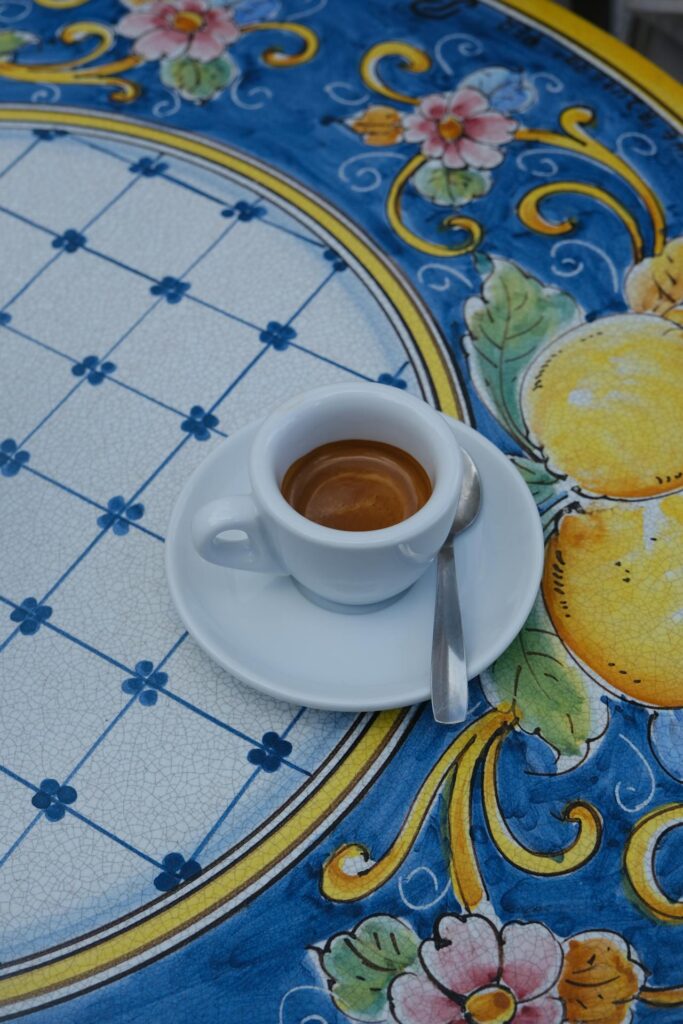
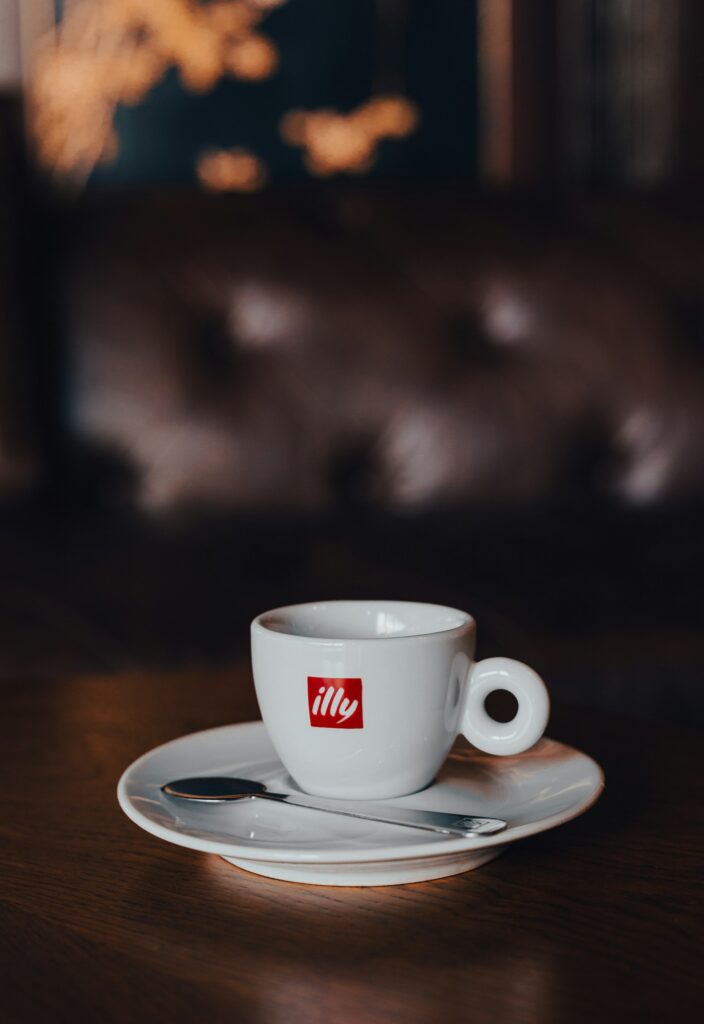
How to brew: Using an espresso machine, tamp 18-21 grams of finely ground coffee with 30 pounds of pressure. Extract 25-30ml over 25-30 seconds at 93°C.
Best coffee: Medium-dark roast beans with a blend of Arabica and Robusta. Traditional Italian blends often include beans from Brazil, Guatemala, and India, creating a balanced profile with notes of chocolate, nuts, and a subtle sweetness.
Popular brands: Illy and Lavazza. Illy’s signature blend, composed of nine different Arabica beans, is crafted specifically for espresso preparation. Lavazza’s Qualità Oro, a favourite among Italian cafés, delivers the perfect crema and balanced flavour profile expected in authentic Italian espresso.
Full, general tasting profile: Initial hit of sweet tobacco and dark cocoa, followed by a velvety mouthfeel carrying notes of roasted chestnuts. The crema contributes subtle red berry brightness. Mid-palate reveals marzipan sweetness balanced by gentle spice. Finishes with lingering notes of bitter amaretti biscuits and dark maple syrup.
Read: What your choice of coffee says about you
Saudi Qahwa
Ideal for cardamom-scented ancient rituals…
This aromatic brew, spiced with cardamom and sometimes saffron or cloves, represents the pinnacle of Arabic hospitality. The ceremony of preparing and serving qahwa is an integral part of social gatherings, with specific etiquette governing everything from the order of serving to the number of cups offered.


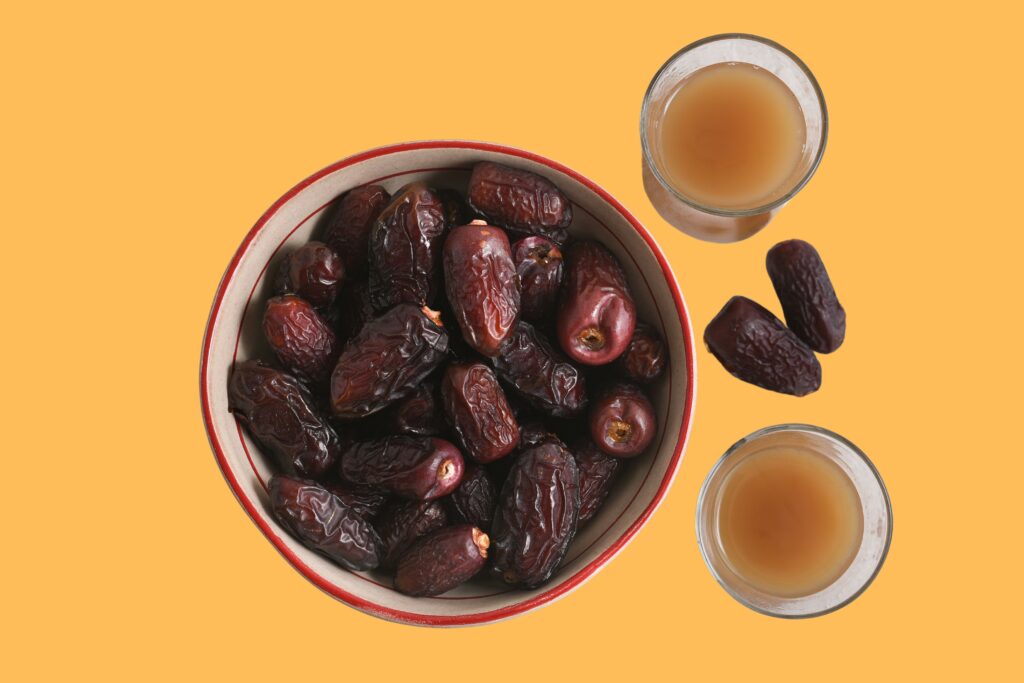
How to brew: Lightly roast green coffee beans with cardamom pods. Coarsely grind and simmer in a dallah (traditional coffee pot) for 10-15 minutes. Strain and serve in small handleless cups called finjans.
Best coffee: Arabica beans from Yemen or Ethiopia, light roast and coarsely ground. These regions produce beans with complex spice notes that complement the added cardamom and optional saffron.
Popular brands: Yatooq and Al-Ameed. Yatooq specialises in ready-blended Arabian coffee with cardamom, offering convenient yet authentic preparation. Al-Ameed, a heritage brand, produces light-roasted beans specifically for qahwa, with varying spice blends to suit regional preferences.
Full, general tasting profile: Opens with aromatic green cardamom and subtle saffron notes. Light-bodied with distinctive grassy freshness from the light roast. Mid-palate reveals delicate rose water and pistachio notes. When prepared with additional spices, develops complex layers of clove and ginger. Finishes with subtle date sweetness and soft herbaceous notes.
Australian Flat White
Ideal for velvet-smooth milk coffee without the foam…
While its origins are contested between Australia and New Zealand, the flat white has revolutionised milk coffee worldwide. It’s the kind you’ll find in just about any coffee subscription today – and for good reason. With its velvety microfoam and perfect coffee-milk ratio, it’s the pinnacle of milk coffee craftsmanship, offering a more robust coffee flavour than a latte while maintaining incredible smoothness.
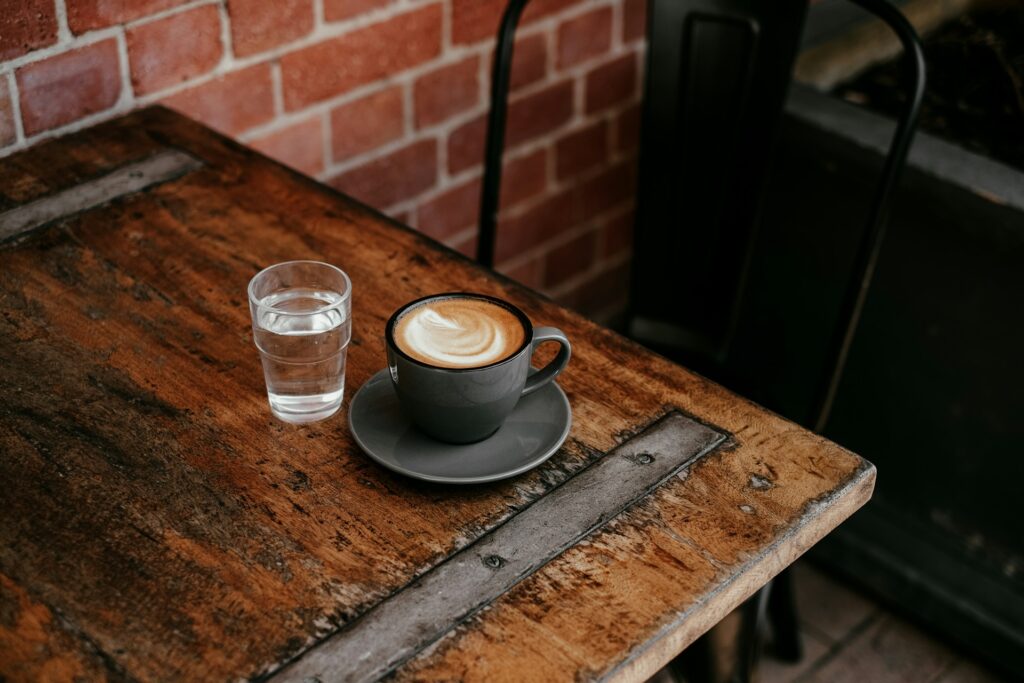
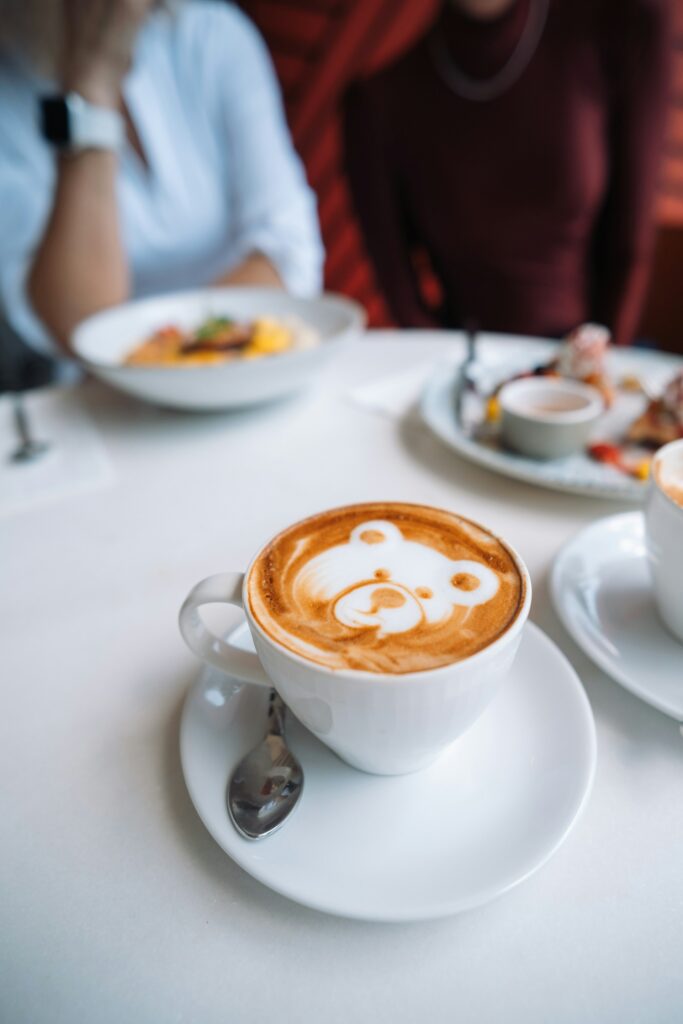

How to brew: Pull a double shot of espresso into a 165ml cup. Steam milk to create microfoam (not frothy), and pour with a slight wiggle to create a smooth, integrated drink with minimal foam on top.
Best coffee: Medium to medium-dark roast espresso blend, finely ground. Look for beans with chocolate and caramel notes that complement the milk’s natural sweetness.
Popular brands: Campos and Five Senses. Campos Coffee’s Superior Blend is specifically crafted to cut through milk whilst maintaining complexity. Five Senses’ Dark Horse Blend is favoured by many Australian cafés for its chocolate notes that complement the microfoamed milk.
Full, general tasting profile: Initial silky mouthfeel carries notes of malted milk and warm honey. The microfoamed milk creates layers of shortbread and crème brûlée sweetness. Mid-palate reveals toasted macadamia notes balanced by subtle citrus brightness. Finishes with lingering chocolate-covered espresso beans and buttery caramel.
Indonesian Kopi Tubruk
Ideal for bold, gritty strength that pulls no punches…
This ‘collision coffee’ represents Indonesian coffee culture at its most authentic. Unlike filtered methods, Kopi Tubruk involves brewing ground coffee directly in the cup with boiling water, creating a powerful, sediment-rich experience. It’s a bold, uncompromising brew that perfectly captures the raw energy of Indonesian coffee culture.
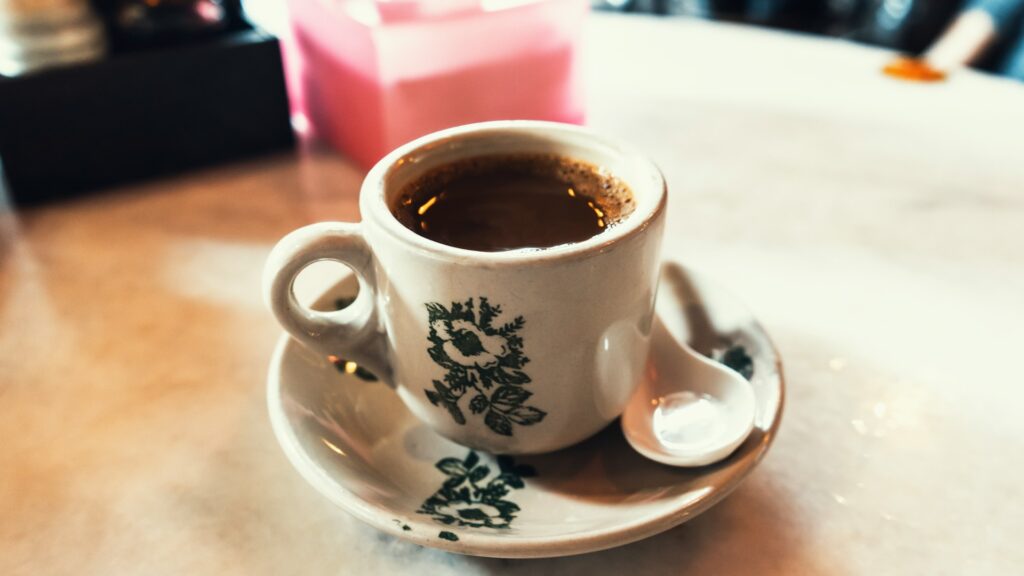
How to brew: Add two tablespoons of ground coffee and sugar (if desired) to a cup. Pour boiling water, stir, and wait four minutes for the grounds to settle.
Best coffee: Single-origin Indonesian beans (Sumatra Mandheling or Java Estate), medium-coarse grind. Look for beans with earthy, spicy notes and low acidity that can withstand the intense brewing method.
Popular brands: Kapal Api and Torabika Kapal Api’s Special Mixed blend is specifically formulated for traditional Indonesian brewing methods. Torabika’s Premium Choice offers a robust flavour profile that stands up to the direct brewing method of Kopi Tubruk.
Full, general tasting profile: Powerful earthiness dominates the initial taste, followed by deep forest floor umami. The unfiltered method produces intense notes of dark cacao and wet tobacco. Mid-palate reveals complex spice notes reminiscent of black pepper and cedar. Finishes with lingering Indonesian hardwood smokiness and raw sugar cane.
Mexican Café de Olla
Ideal for cinnamon-sweet comfort in earthenware…
Traditionally prepared in a clay pot (olla), this cinnamon-infused coffee embodies Mexican hospitality. The earthenware pot imparts subtle mineral notes, while piloncillo (unrefined cane sugar) and cinnamon create a warming, aromatic brew that’s particularly popular in Mexico’s highland regions. This preparation method dates back generations and remains a cornerstone of Mexican coffee culture.
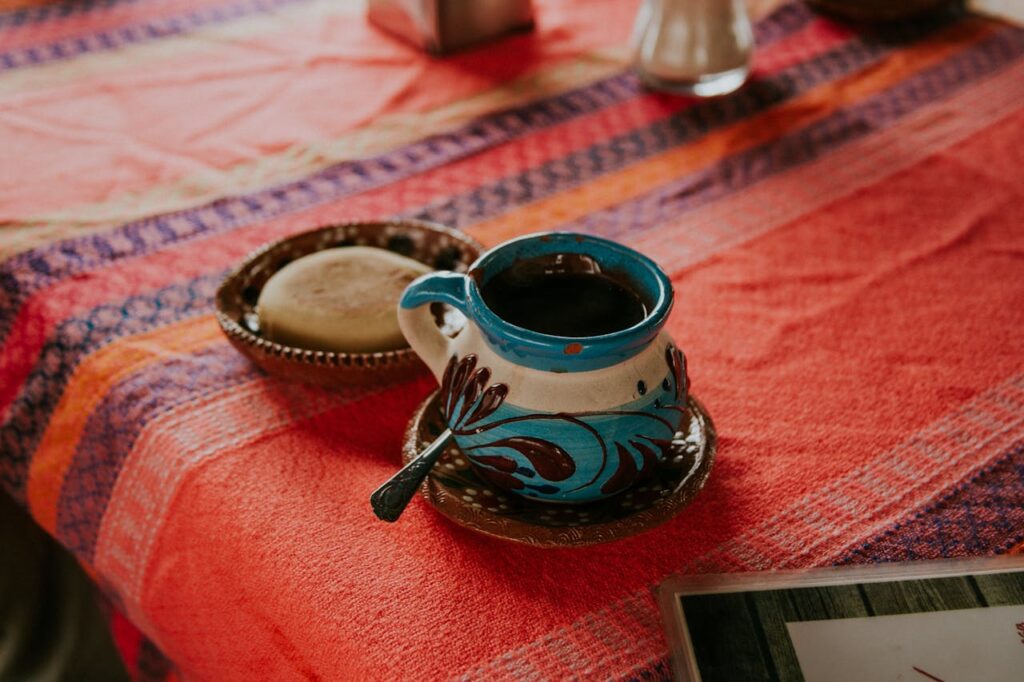
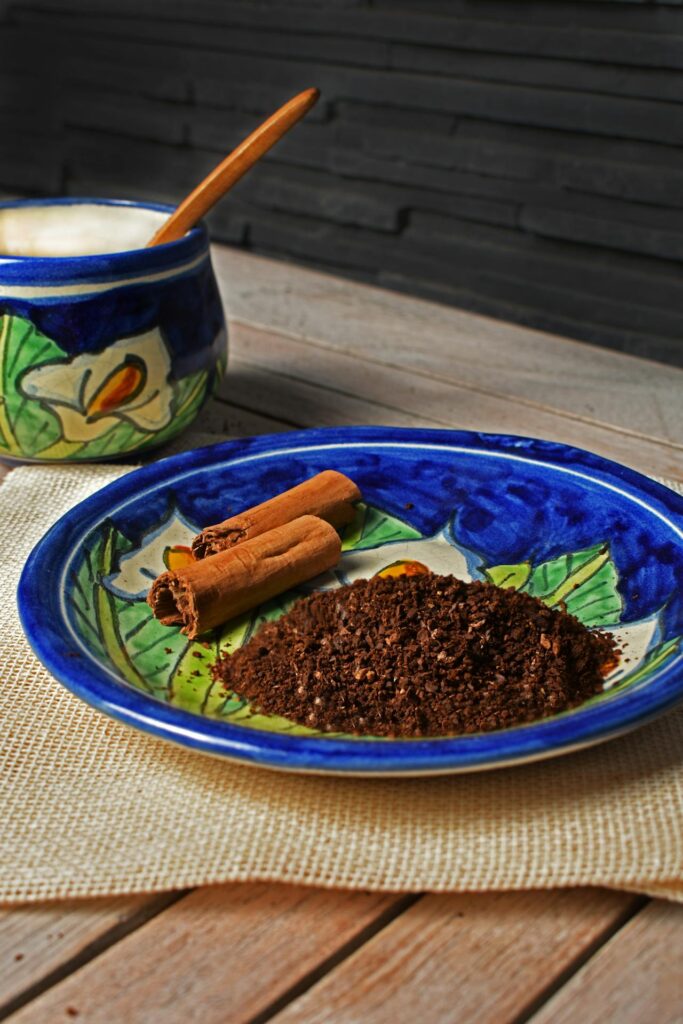
How to brew: In a clay pot, bring water to boil with cinnamon sticks and piloncillo. Add coarsely ground coffee, remove from heat, steep for 5 minutes, then strain.
Best coffee: Medium roast Mexican Altura or Oaxacan beans, coarse grind. Choose beans with chocolate and nutty notes that complement the spices. The natural processing method common in Mexico adds subtle fruit notes that work well in this preparation.
Popular brands: Café El Marino and Tierra Mia. Café El Marino’s Gourmet Altura blend is specifically roasted to complement the traditional spices used in Café de Olla. Tierra Mia produces beans from Oaxaca that are medium-roasted to allow the cinnamon and piloncillo flavours to shine through.
Full, general tasting profile: Opening aromatics of Ceylon cinnamon and raw sugar lead into a warming, spice-forward experience. The clay pot adds mineral complexity while developing notes of Mexican chocolate and star anise. Mid-palate reveals piloncillo’s complex molasses character. Finishes with hints of roasted agave and toasted corn, reminiscent of traditional Mexican sweets.
The Bottom Line
Whether you’re an adventurous coffee enthusiast or simply curious about global coffee cultures, these ten preparations showcase the remarkable versatility of our favourite bean. Each cup offers more than just caffeine—it’s a passport to understanding different cultures, traditions, and the universal language of hospitality.



